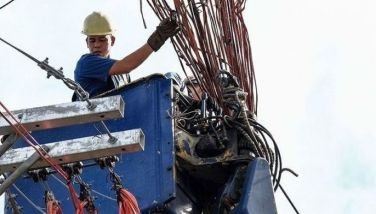Transport crisis

The transport secretary disputes the claim that we have a transport crisis… only a transport problem daw... a state of mind. That’s what Malacañang spokesman Sal Panelo also said: there is no crisis because commuters still get to their destinations.
Oh, and Panelo also has a brilliant advice to harassed commuters: if you want to arrive on time, leave for your destination earlier. Wow! How is that for insulting the millions of commuters who are already doing that every day!
Actually, people are waking up earlier than ever, even before sunrise, to get to work on time. I have noticed rush hour traffic building up on EDSA and C5 as early as 5 a.m.
But that’s nothing new. Our transport crisis had been going on for three administrations now… from Arroyo to Aquino and Duterte.
In fact, the transport secretary acknowledged a crisis when he sought emergency powers to fix it. You don’t need emergency powers for a problem.
From years of writing about this crisis, two things stand out: we have neglected our mass transport system through the years and what little we have, government didn’t manage well.
We should make things simple by getting government out of transport management. Operations and management are not strong points for our bureaucrats at DOTr.
It is easy to suspect what happened to LRT-2 is due to bad management. The failure in the electrical system that caused a fire must have been due to improper or lack of maintenance. Systems like that don’t just go up in a blaze.
Even during P-Noy’s time, LRT-2 had maintenance problems. It had reportedly been decommissioning one train set a year due to lack of maintenance and spare parts.
Panelo himself said: “What we have is a crisis in effective management of the LRT services.”
An official of the Light Rail Transit Authority (LRTA) admitted to congressmen in a hearing they do not have a disaster recovery plan. They have no operations manual that tells them what to do after a burning power rectifier paralyzed the operations of its LRT-2 last week.
So now, basta nine months no LRT-2 service… most likely more. What civilized country allows this? Sorry na lang for the commuters. I would be surprised if LRT-2’s management already knows what to do next.
This is why the Ayala consortium responsible for LRT-1 must deliver a remarkably better performance for running the system. But LRT-1 also had problems last week. The private consortium must be prepared to spend large sums of capital to upgrade the 50-year old system without thinking of quick reimbursement.
Where do we go from here?
Since we need to move over a million people around Metro Manila daily through these unreliable rail systems and chaotic bus and jeepney situation, we essentially have a transport crisis.
Let us not debate dictionary definitions because a crisis is a crisis is a crisis. People feel it. Public officials responsible for fixing it may say it is just a problem but a crisis it is. Maybe if the officials took public transportation, they will agree it is a crisis.
There is little we can expect in the short term for improvement in our rail systems. Add to that the PNR which should be able to help but is so cash strapped it can do little. In fact, Congress is only giving PNR P1.6 billion for next year, a far cry from its proposal of P8 billion to buy new trains.
Given the crappy situation at hand, what can be done?
I suggest that even if the transport department says it no longer needs emergency powers that Congress grants them a limited one anyway.
I hope Sen. Grace Poe and Rep. Edgar Mary Sarmiento will expedite granting of emergency power for DOTr and LTFRB to invalidate all existing bus franchises in Metro Manila so they can properly reorganize. With unreliable trains, we are left with just buses so we better fix the way they operate.
As suggested by traffic experts, one route should be the Balintawak to MOA and no other buses should run on EDSA except those on this route. They have calibrated the right number of buses needed in several studies so just implement. Excess buses can serve radial routes to EDSA.
Bus owners will retain ownership of buses but dispatching should be controlled by a network similar to what Uber/Grab is using. This means more buses on rush hours, less in between and enough buses late in the evening for call center workers and others who work late.
Drivers should be paid a salary so their minds are focused on safe driving and reaching designated pick up points on time.
There should probably be tax incentives for bus operators to invest in new buses and that includes those doing point-to-point or P2P.
I was talking to one P2P operator and he imported 60 buses at P10 million each. He also had to pay taxes at P1.6 million per bus for the 60 buses he imported to provide the first class bus service. He is still losing money.
Since the P2P concept seems to be a viable one in the effort to get car riders to take public transport, tax subsidy is called for. That will help the operators buy more buses so they can run on more predictable schedules, necessary to make folks leave cars at home.
Other than improving the bus system, we have no other options between now and the end of the Duterte term in terms of mass transport. DOTr may say they will deliver an improved MRT-3 but that’s iffy and definitely with no additional capacity.
DOTr should just focus on fixing the buses for quick relief. Hopefully, in time the rail systems will kick in but that will still be quite a wait. Anyone saying otherwise is feeding you b----hit.
Boo Chanco’s e-mail address is [email protected]. Follow him on Twitter @boochanco
- Latest
- Trending





























